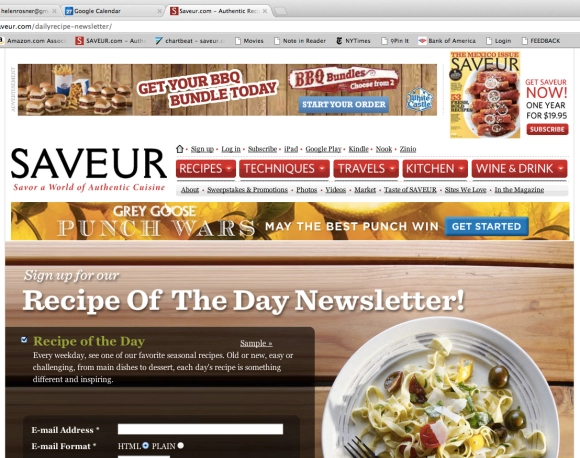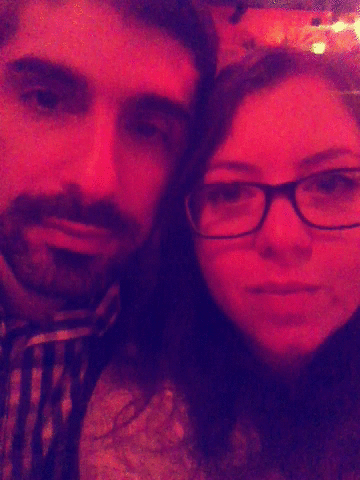A brief spin down some internet rabbit holes made me aware of the existence of the amazing essay “How to Derive the Maximum Enjoyment from Crackers in Bed,” published in 1964 by guitarist and composer and comedy writer Mason Williams in his essay/story collection Boneless Roast, later serving as inspiration for a very cool concept-art book by Ed Ruscha. It really deserves to be held among the great pieces of comic food writing of all time, and because the only other places I can find it online are random forum posts, I’m parking it here for the benefit of future generations. My good deed for the day, done.
How to Derive the Maximum Enjoyment from Crackers in Bed
Mason Williams, 1964
Speaking man to man the most important element in deriving the maximum enjoyment from crackers is the choice of a companion to help you enjoy them. She must be someone whom you admire. A beautiful woman, elegant and accustomed to sophistication, a woman whose company is a challenge to enlist, a woman that’s hard to get.
In approaching the companion that is going to help you enjoy the crackers, it is best not to tell her of your intention; let it be a surprise to her. Be charmingly mysterious, saying only that you are going to do something currently different. If she accepts your invitation, proceed in making the following arrangements.
Reserve two hotel rooms for the same night in two different hotels; one a single room in a skid-row flop house, and the other, a suite of rooms in the finest hotel in town. If you do not own an expensive car, make arrangements to have one at your disposal for the evening.
On the day of the occasion, a few hours before you are to pick her up, purchase several heads of lettuce, romaine, endive, fresh spinach, etc.; several pounds of fresh ripe tomatoes, cucumbers, celery, olives, green onions, and so forth. In other words, whatever ingredients you would choose to make an attractive salad. Finally, you must also purchase five gallons each of the following dressings: Roquefort, French, Russian, Thousand Island, and Vinegar & Oil.
Take these ingredients to the room at the skid-row hotel. Pull back the covers on the bed and make a four or five inch layer of salad that covers the entire surface of the bed, tossing the salad well with your hands. Pull the covers back over the salad and re-make the bed. Be sure there is no salad on the floor. Place the twenty-five gallons of dressing in the closet.
With the above accomplished, proceed to dress for the evening. Dress as though you were a waiter or a wine captain in an expensive restaurant, but leave doubt as to whether or not this is what your attire really suggests. The doubt is, of course, a personal matter. When you are dressed, and all of the necessary arrangements have been made, proceed to pick up your date.
When you call for her, create an air of wistful mystery. however, try not to make your mystery dark and ominous; keep it light and taunting. If she asks you what is planned for the evening, it is very effective to look into her eyes, smile faintly, but say nothing, and then look away.
Drive casually to the flop house. Make interesting conversation; keep her wondering; answer her questions about what you are going to do with only, “You’ll see.”
When you arrive at the flop house, take her quickly to the room you have rented. Once inside the room, ask her this question: “By the way, what salad dressing do you prefer?” When she has told you, go into the bathroom and drape a small hand towel over your forearm (a la fancy waiter). Return to the room and pull back the covers on the bed to display the crisp green salad.
One of the high points of the evening is now at hand. You must coax her to lie down in the bed. She may possibly reject such a notion at first, and may even attempt to leave. Reason with her adroitly. One of the finest points of argument to convince her is that it is perfectly all right is “salads are good for you.” If she is still hesitant, you can even go so far as to chide her for not being adventuresome. Whatever you do, get her in that bed; get tough if you have to, but get her in that bed!
After she is in the bed, go to the closet and take out the five gallons of her choice of dressing, and with great flair, pour it over her entire body. She will probably make some remarks like: “What is the meaning of this ridiculous tableau? Are you mad, you crazy son-of-a-bitch!” Enjoy them.
When you have emptied the entire five gallons of dressing on her, snap your fingers and say “Crackers!” Begging her forgiveness, explain that you have forgotten the crackers. Tell her that you will have to run to the store, and for her not to move a muscle.
Race out of the flop house, drive swiftly to a store and buy a small box of saltines. Do not buy fancy crackers. When you have purchased them, drive to the fine hotel in which you have rented a suite of rooms. Go directly up to your suite, place the box of crackers on the nightstand beside the bed, take your clothes off, and get into bed. Turn the lights off, settle down, and nibble on the crackers one by one. You will derive a maximum enjoyment from them.
 If ever you feel that your menses are not Wes Anderson enough, the world now contains
If ever you feel that your menses are not Wes Anderson enough, the world now contains 


